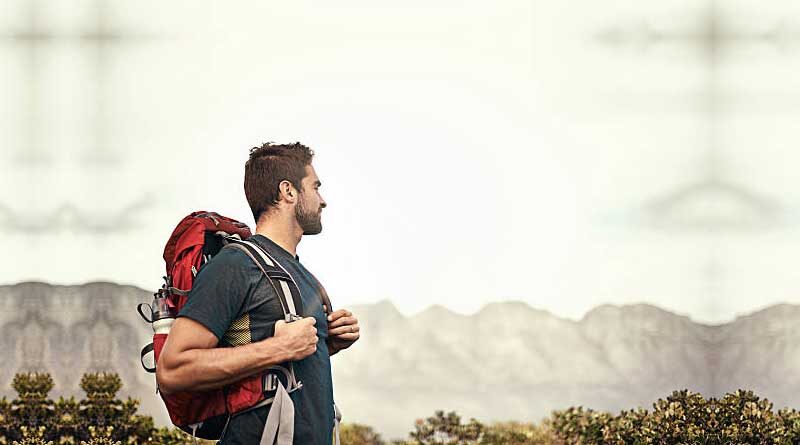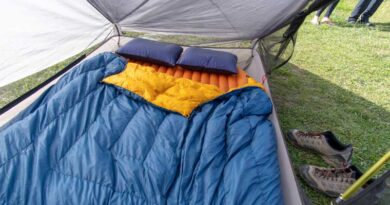How to Adjust the Backpack Torso Length?
Choosing a pack to fit your body type is generally a function of two simple measurements; your torso length and your hip size. Your torso length has nothing to do with your height so make sure you measure. One of the biggest mistakes new backpackers make is choosing a backpack without measuring their torso length first.
First of all, it’s important to know what goes into sizing a backpack for a given frame. You could be a 6′ tall person and you might need a small framed backpack, you could be a 6’6″ person and need a medium size backpack and you might be a 5’6″ person and need a medium or a large frame backpack because it has to do with torso size and not your height.
See the Best Backpacking Packs
Measure your Torso Length
To find your torso length, grab a soft tape measure and a friend to help out. If you don’t have a soft tape measure just use the length of the rope and then lay it out to measure when you’re done. Start out by tilting your head forward and finding the bony bulge at the base of your neck. That’s your C7 vertebra and the top of your torso length. Next, find the tops of your hip bones and place your hands on your hips with your thumbs pointing towards your spine. Where your thumbs would meet in the middle of your back is the bottom of your torso length. Knowing your correct torso length will make buying the right size pack much easier especially if you’re buying from an online retailer.
Adjust your Torso Length
Before you even get your pack on, you’ll need to adjust the torso length. It’s much easier to do it when it’s off your back obviously. There’re a few different structures in packs. Some of them are Velcro, some of them are poppers, and some of them have pull cords. Mine in the Osprey Kyte is Velcro. I’ve got a very short back length because I’m only five foot one. So I always have mine set to the lowest setting. To adjust the torso length, just undo the Velcro and just slide them up. Your shoulder straps should sit in with your C7 vertebra and then the bottom of the pack needs to sit on your iliac crest. The iliac crest is basically just a fancy word for your hip bone. That’s where the hip belt needs to sit and that will be the correct back length for you.
Measure your Hip Belt
The next important measurement is your hip belt size. You’re going to want a comfortable hip belt with plenty of room for you to be able to cinch it down tight and loosen it up when you need to. You might lose a little weight on longer trips so make sure you have a couple of extra inches to be able to cinch down your hip strap tight. Your hip strap is going to be the most important load-bearing structure on your pack so make sure it’s comfortable and make sure you get this measurement right.
Most companies will allow you to choose your torso length and your hip belt size separately for your pack and some even have removable hip belts. To find your hip belt size, simply take your tape measure and wrap it around your waist at the top of your hips. That’s your hip out measurement and it’s also the center point of where you’re going to want your pack to rest on your hips.
How to Choose a Backpacking Pack?
Choosing a backpack is greatly dependent on your personal preferences and your hiking style. If you’re a minimalist, you’ll probably want a simple and lightweight pack with a very small frame. If you’re going to be carrying heavier loads, you’ll probably still want a lightweight backpack but you’ll just want one with a sturdier frame that can carry that extra weight comfortably. In either case, choosing the right pack is partly about choosing the right size backpack for your body and partly about adjusting it so that you can wear it comfortably on the trail.
Over the years, I found that simple minimal lightweight packs generally fit my needs better but that’s also because I’m carrying lightweight equipment in my bags. If you try and stuff a lightweight pack full of heavy gear it’ll quickly become uncomfortable. If you regularly carry 40 pounds or more in your backpack, a sturdy frame with more adjustment straps will help you to carry those loads more comfortably. But remember, the more weight you put on your back the more stress you’re putting on your body, and at some point in time, there’s nothing you can do to make a heavy pack feel comfortable. Whatever your preferences might be, take time, do your research, and buy the right pack for your needs.
Conclusion
Before you invest in a backpacking pack, you’ll want to make sure that you get one that’s sized for your torso. Having a correctly sized pack is the first step in having a comfortable pack. Regardless of the pack’s volume, it’s your torso length, not your height that determines your pack size small, medium, or large.
Having a properly fitted backpack is a critical component of comfort on the backpacking trail. If your pack feels comfortable for the first mile or two or feels good in the store, it’s not necessarily going to feel good at mile 15 mile or 25 on the trail or after you just have a heavy load and a long day. So properly fitting your backpack is critical for maximizing your energy and making sure that you’re enjoying yourself on the trail.
Remember, with a lightweight backpack, it’s easy to make quick adjustments that will allow you to hike comfortably. When you’re more comfortable on your hike, you’re probably going to have a much better time on your backpacking trips.




